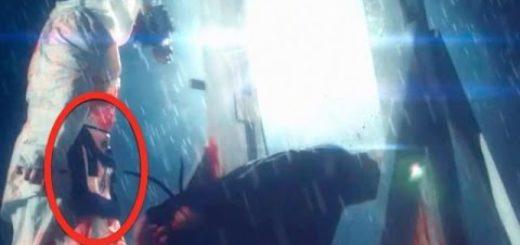What Get Your Guns Hillary Clinton Wants For America-See FEMA Camps & Rex84
The Watery Grave of Romania’s Middle Class

Dictators will always have their defenders. Communist apologists in the 1930s, for example, justified Joseph Stalin’s atrocities by saying his mass murders were necessary to lay the foundation of a future socialist utopia. “You can’t make an omelet without breaking a few eggs,” they said, to which George Orwell famously replied: “Where’s the omelet?”
Sadly, the history of communism is full of pharaonic projects that caused untold death and suffering. A poignant example is the construction of the Danube-Black Sea Canal in Romania, which has been called a “cloaca of immense human suffering and mortality.”
According to some accounts, Stalin is mainly responsible for the canal’s construction, as he seems to have pressured Gheorghe Gheorghiu-Dej, Romania’s communist dictator, into starting the project. The Romanian communist government started building the canal in 1949, and ended work in 1953, leaving the canal unfinished. Although the communists wanted to build the canal for ostensibly economic reasons—it would cut 170 miles off the route from the Danube to the Black Sea—the canal served a much more sinister goal: the destruction of Romania’s middle class. It would soon come to be known as “Canalul morții”—the Death Canal.
The communist government built 14 forced labor camps by the canal that could house up to 60,000 prisoners. They worked in horrifying conditions, facing cruel and relentless torture. According to a report published by the Romanian ministry of foreign affairs in 1954, prisoners were routinely hit with “iron bars, spades, and shovels for no reason”; they were refused medical treatment and forced to continue working while grievously ill; they were thrown naked into isolation cells in the dead of winter; and they were forced to stand in icy water for hours on end. The majority of prisoners died or were permanently disabled as a result of this treatment.[1]
Canal workers also faced the daily threat of death by starvation, living on potato soup and coffee made of roasted rice.[2] George Andreica, an ex-prisoner, recounted the conditions in inner Camp Midia, which the inmates simply called “death.” The prisoners devoured “insects, snakes, mice, rats,” and any other living beings unlucky enough to cross the fence separating the inner and outer camps. The captives often resorted to cannibalism; whenever one of their friends would die, they would pounce on the corpse, fighting over who got to gorge on the body.[3] The exact numbers of those who died from starvation, torture, and exposure are uncertain, but are estimated to be in the tens of thousands.
Communist officials proudly referred to the canal as the “grave of the Romanian bourgeoisie.” The canal’s victims came from all walks of life: “landowners, priests, professors, students, [and] officers in the former Royal Army” were all consumed as fuel for the canal’s construction. These people, who came from such disparate backgrounds, were all united by their designation as “enemies of the people.” Professing the Christian faith, or getting caught listening to “Western imperialist” radio stations, was enough to land an ordinary Romanian in a slave camp, where the Romanian Interior Minister specifically gave orders to “cure the sick with work”—in other words, “to let them die as quickly as possible.”
Romania was not the only country behind the Iron Curtain with projects intended to work “enemies of the people” to death. In Russia, in the early 1930s, Joseph Stalin ordered the construction of the Baltic-White Sea Canal, which was built in 20 months. Throughout this time, 25,000 laborers died at the rate of over 40 per day. Much like the Danube-Black Sea Canal, Stalin’s project did not serve an immediate economic need; its construction served mainly to butcher his regime’s opponents.
The contrast with the capitalist West could not be greater. During the construction of the Golden Gate Bridge, only 11 workers died in five years, and while the Empire State Building was erected, only five workers died in 16 months—and these laborers were victims of workplace accidents, not of starvation, torture, or beatings. These two American building projects were economically profitable and cost exponentially fewer human lives than the communist-built canals.
Construction of the Danube-Black Sea Canal was halted in 1953, as Romanian engineers had given “too rosy a picture” of when the canal would be finished. For their error, several of them were “sentenced to death and several more to hard labor.”[4] Nicolae Ceaușescu restarted the project in 1976, using soldiers and ordinary criminals, and finished it by 1987. Although the communist regime fell only two years later, the new Romanian government never formally apologized for the mass murder that took place on the canal. Few Romanians know or care that the canal was built on the backs of slaves, and no memorial stands to commemorate the tens of thousands who were massacred. In 2004, then-President of Romania Ion Iliescu gave a speech praising the canal as an example of what the Romanian people’s grit and hard work can accomplish. He mentioned only in passing the unspeakable crimes that took place to build the canal, instead commending the canal as Romania’s “Blue Highway.”
A writer who visited the “Blue Highway” in 2010 described the finished product: the canal is “dreary… 70 meters wide… there’s not a ship to be seen, left or right, not a boat, not a fisherman, not a duck—nothing, as far as the eye can see. In the six hours we spend driving alongside the canal I see one tug… For lack of industry or war, the canal is completely redundant.” [5] Where’s the omelet, indeed.
[1] Jaap Scholten, Comrade Baron (Reno: Helena History Press, 2016), 261.
[2] Ibid., 254.
[3] Ibid., 263.
[4] Ibid., 264.
[5] Ibid., 262.
















